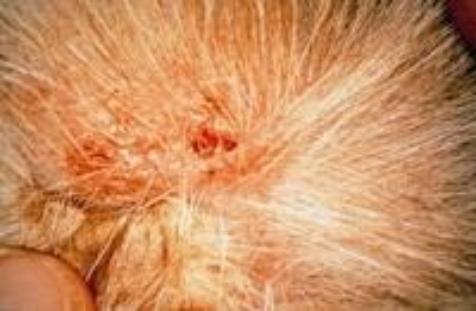Skin infections in dogs and cats

The skin is a vital organ and provides a barrier composed of physical and chemical elements to protect the animal against harmful external influences. The coat provides a first line of defense against pathogens but the major physical barrier is the surface of the epithelium (the stratum corneum) which is coated in an oily layer of sweat and sebum. Parts of the oily layer also have chemical properties, e.g., antibacterial and other parts can have an inhibiting effect on bacterial growth.
Pyoderma
Pyoderma and recurrent pyoderma are seen frequently in small animal practice and can be very frustrating to treat as they are often secondary to another problem such as allergies (fleas, food), atopy, trauma and seborrhoea.
Pyoderma can be classified into three types;
-
Surface pyoderma - bacteria colonise the outermost layer of the skin.
-
Superficial pyoderma - bacterial infection is at the level of the intact hair follicle.
-
Deep pyoderma - bacterial infection extends beneath and beyond the hair follicle.
Cases can frequently recur and treatment protocol should be formulated specifically for each individual case. For resolution of secondary pyodermas the underlying or predisposing problem needs to be identified and treated. Skin infections can be treated topically, systemically or more frequently with a combination of these.
